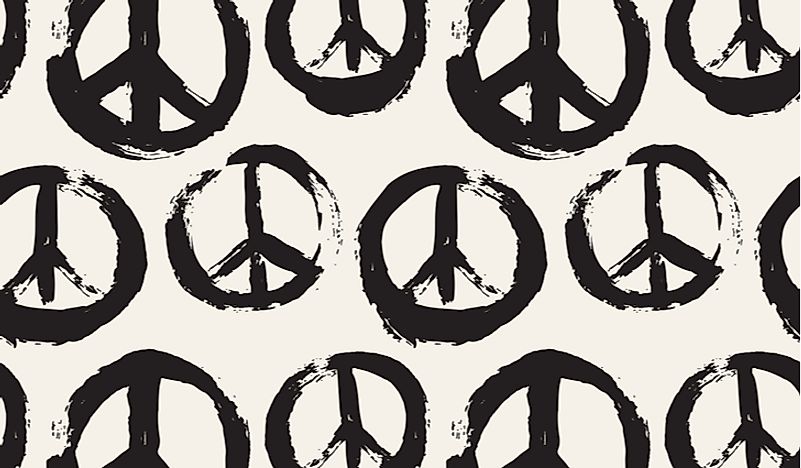What Was The Counterculture Of The 1960s and 1970s?

A "counterculture" refers to a movement that is in opposition to mainstream (or popular) culture. Counterculture is often expressed through protests, the rejection of an old way of doing things in favor of new methods, and, in extreme scenarios, the creation of a divergent culture from the culture in place. Some themes synonymous with counterculture of the 1960s include psychedelic rock music, anti-war sentiment, San Francisco's Ashbury neighborhood, and the Civil Rights Movement. The most important themes and take-aways from this movement will be outlined below.
5. Historical Background and Overview of the
The counterculture of the 1960s was an anti-establishment movement that spread throughout the Western world in the 1960s. It lasted into the mid-1970s. The counterculture movement involved large groups of people, predominantly young people and youth, who rejected many of the beliefs that were commonly held by society at large. This rejection was most often shown in the form of non-violent protests. The subject of these protests included racial segregation, widespread poverty, environmental pollution caused by rapid industrialization, and the discrimination of minority groups. The youth also fought for the freedom of speech and freedom of assembly. The emergence of television as a source of information and entertainment fueled this cultural change, as did new and emerging books, like On the Road and One Flew Over the Cuckoo's Nest, and music like Jefferson Airplane and the Beatles.
4. Global Reach and Notable People and Events
Those involved in the counterculture movement succeeded in bringing an end to restrictive censorship of films and other mass media productions. As a result, film makers made productions on subjects that were previously prohibited, bringing change to the mainstream media. Fashion trends and hairstyles also evolved rapidly throughout this time. The youth were quick to adopt new trends while the old were hesitant which led to a "generation gap". At this time, a drug culture also emerged, particularly among young people. Due to this reason among others, law enforcement officers and students often clashed throughout this time.
Those involved in the counterculture movement of the 1960s became involve in a long and lengthy protest against the Vietnam War. The movement spread from America to Western Europe in the cities of Paris, London, Amsterdam, Rome, and West Berlin. In Europe, the counter-culture propagators created their own fashion, music, magazines, and lifestyle. The movement in France involved students nearly toppled the government in May 1968. In the Czech Republic, the anti-establishment youth maintained long hair. The youth were seen as unkempt and were banned from most social places. In some instances, thousands of long-haired youth were arrested and forced to cut their hair. Satirical magazines emerged in Australia in the 1960s, some of which published obscene content and were subjected to trial. In Mexico, counterculture was mostly spread through rock and roll music.
3. Development, Spread, and Achievements
The emergence of the television as a primary source of news, information, and entertainment, especially after World War II, coupled with a massive expansion of consumerism, led to the growth of television advertising. These became major components in the development and the spread of the counterculture. The advertisements created disillusionment among the young generation particularly in the United States as well as formulating new social behaviors. The advertising agencies were also courting the hip youth market, while the news coverage of the horrifying images of the Vietnam War brought the reality of the conflict to the living rooms for the first time. The spread of Cinema and News Radio also helped in spreading the culture at the time to different parts of the world.
2. Challenges and Controversies
The counterculture movement encountered resistance from law enforcement officials as well as the older generation. Numerous protests took place in different cities involving police and the counterculture propagators. In most instances, their newly adopted culture was unacceptable and therefore banned. Many activists and students involved in the counterculture movement were arrested.
1. Lasting Legacy
The counterculture movement had a significant, lasting influence on the music, fashion, literature, and art of the Western World. The movement addressed some taboo topics such as homophobia, xenophobia, and racism. As a result, the Lesbian, Gay, Bisexual, and Transgender (LGBT) community gained greater acceptance, and same-sex relationships were eventually legalized in most states of the United States (albeit several decades later). Racial segregation was abolished in most states following the counterculture's non-violent protests. Other aspects of the counterculture movement were assimilated into the mainstream culture and ceased to be taboo.
The counterculture movement of the 1960s played a key role in shaping modern day society. It led to growth in the music industry which continues up to date. It resulted in a less conservative and more liberal society. The movement has been accused of leading to a degradation of traditional values. The disregard for cultural values by the counterculture movement has led to the unruly and violent society we have today.











